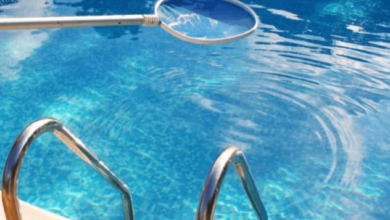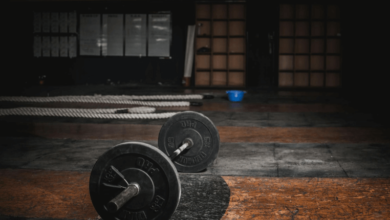How to Find Porters for the ABC Trek

The Annapurna Base Camp Trek is a journey of a lifetime, which leads deep into the heart of the Annapurna Himalaya – one of the most magnificent regions in Nepal. This famous trek, known as the ABC (Annapurna Base Camp) Trek, is a unique mixture of cultural experience, strenuous physical activity, and a great close-up view of the mighty Himalayas. However, it is so tons more than only a hike; the Annapurna Base Camp Trekking is an immersive enjoy that brings the trekker into direct contact with Nepal’s beautiful 8 tongues of ice, and its pleasant Gurung and Magar human beings. From planning to walking, this guide has everything you need for your next trek in the splendour of the Annapurna Sanctuary.
The Annapurna Base Camp Trek Difficulty and Physical Preparation
The Annapurna Base Camp Trek Difficulty is moderate to fairly challenging overall. It is a long walking distance of around 115 kilometers with continuous inclinations, such a steep climbing and dropping on the stone stairs. No technical mountaineering experience is necessary, but the duration—usually 8-12 days—and a maximum campground altitude of 4,130 meters (13,550 feet) make this an endurance challenge that will test even the fittest among us. Annapurna Base Camp Trek Preparation Physical conditioning is a must for a fulfilling Annapurna Base Camp Trek. Then train for at least two months before you leave on cardiovascular endurance (i.e., running, cycling, or swimming) and leg strength (e.g., squats, hill walking with a weighted pack). Slow and steady really does win the race, and acclimation is more important than speed.
See also: How to Choose the Right Home Automation Devices for Your Lifestyle
Itinerary of Annapurna Base Camp Trek: The Perfect Itinerary
Picking the right pace is really the only thing that matters for a successful ABC Trek. A typical 10 – 12 days long Annapurna Base Camp Trek Itinerary is enough as it eases/allows you to adapt pace together, increasing your body being use to altitudes along the trek. Trying to do a 7 or 8-day Annapurna Base Camp Short Trek is highly risky in terms of AMS (Acute Mountain Sickness), and it is not advised unless you are extremely well-acclimatized. The traditional route generally approaches picturesque villages such as Ghandruk, Chhomrong, and Deurali with essential acclimatization days in between and gradual altitude gain.
Necessary permissions and the ABC trek cost
All, including the trekker who is doing the Nepal Annapurna Base Camp Trek, need to obtain two permits. The first one is the Trekkers’ Information Management System (or TIMS) Card that assists with registering your information for your safety and security. Another is the Annapurna Conservation Area Permit (ACAP), for the reason that the whole direction falls within the confines of the Annapurna Conservation Area. Each is without problem acquired in Kathmandu or Pokhara; but, they will be obligatory for trekking legally, and through the general Annapurna Base Camp Trek rate can vary dramatically depending on your hiking style (an unbiased or guided trek), lodging options, and daily meals expenditure. Price range for lets, insurance, shipping, and ordinary food and accommodations.
The pleasant Time in your trek to Annapurna Base Camp
The Trek to Annapurna Base Camp trip is largely based on your time of travel, and how exactly you want to do it, or enjoy the success. There are two windows in a year for trekking in Nepal. The best is the Autumn (September to November,r), and this provides dry conditions, moderate temperatures, and clear blue skies with optimal viewing of Annapurna I & Machhapuchhre (Fishtail) peaks. The secondary and also gorgeously pretty season is Spring (March, May), when the temperatures are balmy and the lower trails erupt in full color with the blooming of the national flower – rhododendron. Winter (Dec to Feb) is bitterly cold, and snow on the high passes can make crossing them impossible, but various treks are possible at this time of year.r The monsoon season (June to Aug) should also be avoided, as there is constant rain, muddy trails, and mountain views are rare.
ABC Trek Packing:
Packing intelligently is the key factor in ensuring a successful ABC Trekking trip. Because of huge temperature swings — from mild afternoons in the lower valleys to frozen nights at 4,130 meters — the layering system is crucial. You’ll want to have layers: a thermal base layer assembly, insulating mid-layers in the form of fleece, at the side of heavy-duty down jacket, and a water-resistant/windproof shell for the upper body. Sturdy, nicely-worn, waterproof trekking boots are a must for the rough and sometimes slick terrain. You need to have a heat enough snoozing bag for a minimum of -10°C, as well as certain different essentials that encompass: a headlamp, basic first-aid kit (such as blister treatment), sun protection, and a way of purifying water (pills or a clear out) with the intention to reduce plastic waste.
Hiring Annapurna Base Camp Trek Guide and Porters
For novice trekkers or anybody simply wishing to enjoy the scenery, hiring a local Annapurna Base Camp Trek Guide and /or porter is an essential feature of the Annapurna Base Camp Trek Tour. The added value of having a certified guide who can navigate, keep you safe, and translate the culture will ensure your experience is not only more fun but also offers everything being taken care of seamlessly. Porters are the unspoken heroes of the Himalaya, lugging your bulky equipment (often up to 20–25 kg per porter) so that you can trek light with only a daypack.
Cultural Immersion and Teahouse Etiquette
The Annapurna Sanctuary Trek is a trek that is as a great deal about the tradition of the place as it is about its precise beauty. The path meanders through conventional Gurung and Magar villages, presenting glimpses into Himalayan culture. Resorts are in teahouses — modest, family-run hotels with rooms and food. Make sure you take off your shoes earlier than getting into the teahouse or room at all times, and that you’re going to want to eat/regal dinner/breakfast at whichever teahouse gave you the bottom rate on a room. Namaste is a greeting and a gesture of admiration. Even as passing by means of non-secular structures such as a stupa or amani walls, usually accomplished from the clockwise aspect.
Protection, Altitude, and Emergency making plans
Protection at the Annapurna Base Camp Trek focuses on acclimatization. A safe Annapurna Base Camp Trek itinerary consists of the “climb high, sleep low” principle. Don’t push aside signs of Acute Mountain illness (consisting of a continual headache not alleviated by way of ache killers, nausea, or dizziness). Slowing down, maintaining hydrated (4-five litres of water a day), and having an emergency plan in the vicinity are important. This insurance ought to consist of full journey cover, which specifically covers excessive-altitude trekking and emergency helicopter evacuation, considering that from day 6 of our ABC Trek, the handiest way to descend speedy is by heli.
Conclusion: The Victory of the Annapurna Base Camp Trek
The last push to ABC Trek is an epic personal victory. Sitting at the center of a natural amphitheater, Annapurna Sanctuary is surrounded by a ring of stunning high peaks- Annapurna I, Hiunchuli, Gangapurna, and Machhapuchhre – A memorable reward to the strenuous ABC Trekking trip. This is not an experience that can be done to completion — the grandiosity of the towering mountains and the serenity & silence at this extremely high altitude leave a lasting impression on every soul. This Annapurna Base Camp Trek Tour is a panoramic journey into the heart of Annapurna with views so amazing that it will blow your mind, from a 4130m hilltop. Annapurna Base Camp Trek brings the adventure of a lifetime.





